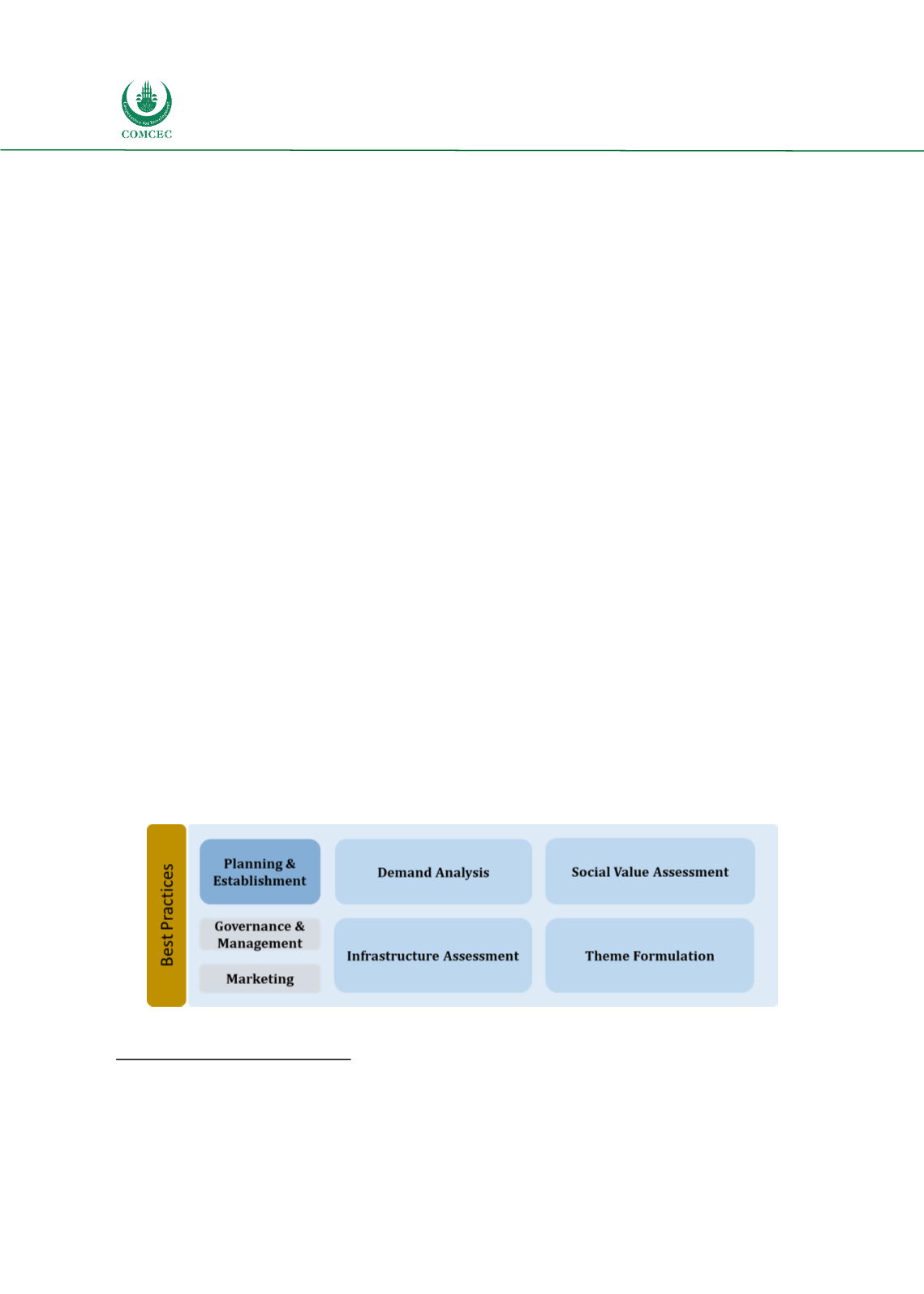

Sustainable Destination Management
Strategies in the OIC Member Countries
60
connecting various natural attractions in the corridor member countries, such as Akagera
National Park in eastern Rwanda and Lake Nakuru in Kenya. The corridor has no historical
origin; it was designed in 2013 as part of a larger cooperation project between the three
member countries in several areas. The corridor is transnational as the three member
countries, Rwanda, Kenya, and Uganda, are in Africa. The corridor was developed formally by
the government of the three countries.
184
The Abraham Path is based on the journey of the Prophet Abraham, with his legacy of loyalty
and hospitality, and his family across the Middle East. It is classified as a newly designed
cultural TC as it was devised by a group from Harvard Law School in 2006. Later, the NGO
Abraham Path Initiative, which is based in the U.S., collected information on Middle Eastern
traditions, tales, and legends that can be linked with the Abrahamic heritage and used it for the
thematic development of the route. With NGO and academic institutions spearheading its
development and management, the Abraham Path is considered an informal corridor.
185
Currently, the Abraham Path consists of 430 km of walking trails across four countries on three
different continents and is expected eventually to cover 5000 km in 10 countries. The
Palestinian part of the trail covers around 182 km in the West Bank.
186
Turkey’s Abraham path
trail, which was launched in 2012, covers 170 km. In Jordan, the trail, which was launched in
2017, covers 650 km trekking route that crosses the country in almost six weeks. In Egypt,
Bedouin tribes and NGOs, in cooperation with the Palestinian NGO Masar Ibrahim as well as
the Jordan Trail Association, have developed a 250 km trail in Sinai. The Abraham Path
initiative is working on developing a trail in Saudi Arabia with specialists.
187
2.2.
Planning and Establishment of OIC Tourism Corridors
As outlined in the previous chapter, planning and establishing MDTCs is a challenging task that
requires taking into consideration a number of elements, including the formulation of the
corridor theme, assessment of the tourism assets to be included in the corridor, and the
infrastructure connecting the various corridor nodes. Furthermore, the viability of the corridor
has to be assessed in terms of being supported by local tourism stakeholders along the corridor
countries as well as being appealing to tourists.
Figure 19: Tourism Corridor Planning and Establishment Best Practices
184
Karuhanga, James.2018.10 things to know about the revamped Northern Corridor Integration Projects initiative. The New
Times Publication Website.
185
Teller, Matthew. 2018. Hike Palestine. Aramco World Website.
186
The World Bank. 2013. Project Information Document: Concept Stage.
187
Teller, Matthew. 2018. Hike Palestine. Aramco World Website.
















